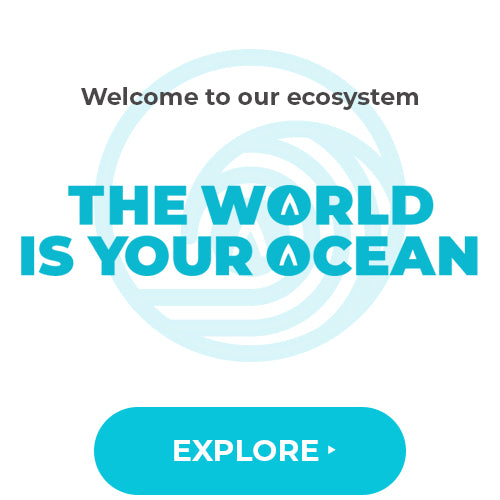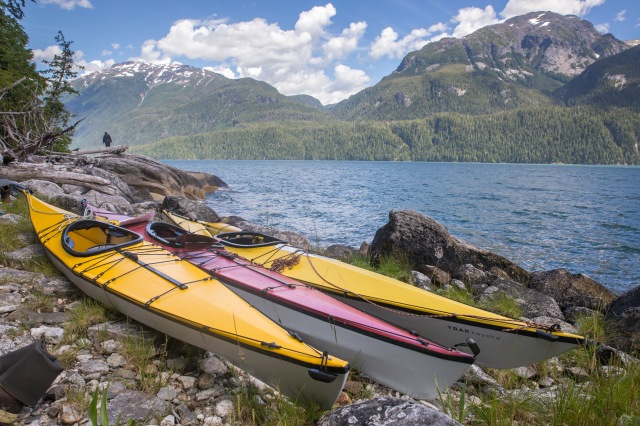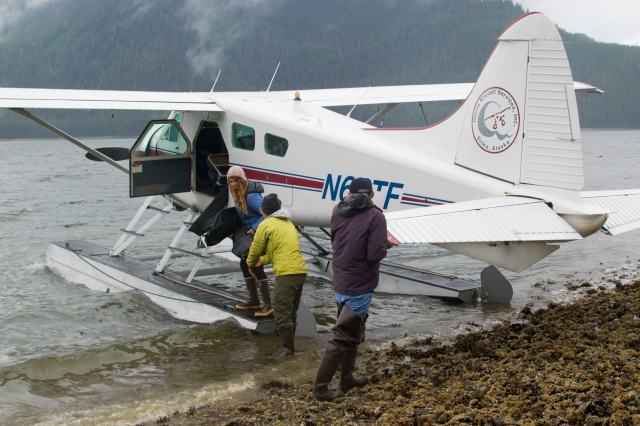VIDEO: Protecting Our Remote Wildernesses With TRAK Kayaks

VIDEO: Protecting Our Remote Wildernesses With TRAK Kayaks
“Thank you for helping us access remote regions of Southeast Alaska with your TRAK kayaks so we can do our conservation work.”
– Mike, Field Biology Intern, Sitka Conservation Society
Join TRAK in celebrating a precious piece of earth called the Tongass. We’ve partnered with the Sitka Conservation Society to protect the temperate rainforest that forms a bridge between Canada and the United States.
Take a journey deep into the Tongass with TRAK and the Sitka Conservation Society and watch this video showcasing the work they do using TRAK kayaks:
“The most trying trip for these TRAKs was a 13 day, 130 mile survey of the Portland Canal. The Portland Canal is a 100-mile long fiord that separates Canada from Southeast Alaska, with almost the entire Alaskan side lying within the Misty Fiord Wilderness area. However, the steep, almost unbroken rock walls, unrelenting wind and sheer remoteness makes it nearly impossible for the Forest Service to manage this canal. Thanks to the flexibility of the folding TRAK kayaks, we were able to survey this often overlooked canal.”
Republished by permission from: Sitka Conservation Society Blog, Originally Posted: October 29, 2014
By Mike Belitz, Field Biology Intern, Sitka Conservation Society
When collecting baseline solitude, campsite and invasive plant data in remote Wilderness areas throughout the Tongass National Forest, getting to these areas often presents a challenge, most often alleviated by taking a floatplane. However, to survey the greatest distance to help manage the most Wilderness, sea kayaks are needed for swift and efficient transportation. But how can a kayak fit in a small plane? The creators of the TRAK kayak are a company that offer a solution to this problem with their polyurethane fabric and foldable lightweight aluminum frame, allowing us to survey locations that may have otherwise been unrealistic.
This spring, generous donors rose to a matching challenge, allowing the Sitka Conservation Society to raise the funds to buy a TRAK kayak, and the kind folks atTRAK kayaks donated another three! This allowed us to take four people (the maximum number that fits in a beaver floatplane) into remote Wilderness areas and have kayaks after landing. This summer, we put the TRAK kayaks to the test, using them on five Wilderness Trips to five different Wilderness areas. The TRAKs were also used as part of a kids kayak course and were paddled on Mendenhall Lake in front of the Mendenhall Glacier.
The most trying trip for these TRAKs was a 13 day, 130 mile survey of the Portland Canal. The Portland Canal is a 100-mile long fiord that separates Canada from Southeast Alaska, with almost the entire Alaskan side lying within the Misty Fiord Wilderness area. However, the steep, almost unbroken rock walls, unrelenting wind and sheer remoteness makes it nearly impossible for the Forest Service to manage this canal. Thanks to the flexibility of the folding TRAK kayaks, we were able to survey this often overlooked canal. Still, before this trip we had only used the TRAKs once before and it was on a base camping expedition. Thus, there were some reasonable concerns about packing two-week’s worth of supplies in a folding boat. Luckily, the TRAKs packed well and handled amazingly. On this trip, we put the TRAKs to the test as we paddled in sizable chop nearly every day, dealt with the huge 20 foot tidal exchanges that were occurring at the time, and to our surprise we experienced the natural anomaly of a jökulhlaup—meaning a glacial lake broke free from the Salmon Glacier at the head of the fiord—resulting in a week-long constant ebb current. Nonetheless, the TRAK kayaks handled impressively well and it was easy to forget you were in a folding Kayak.
Another noteworthy expedition taken with the TRAK kayaks was on a trip down the west coast of Admiralty Island in Kootznoowoo Wilderness. On this trip, a crew of four took the ferry to Angoon and arrived in early afternoon. We were then able to take the Kayaks and gear to the sea, and we were on the water in time to find a good camp in the Wilderness by sunset. On this expedition, we paddled and surveyed 105 miles within the “Fortress of the Bear” before getting picked up by a floatplane. The flexibility to fold the kayaks into duffle bags greatly improves our ability to be stewards of the Wilderness and survey locations otherwise too remote.

Sunset paddling in Kootznoowoo Wilderness. Photo: Bethany Goodrich
Once again, we want to sincerely thank the kind and generous donors who helped SCS buy a TRAK, and we would also like to thank TRAK Kayaks for donating three boats to our project. Although the TRAK kayaks’ Wilderness field season is over, there are always remote Wilderness Areas in need of baseline Wilderness surveys, and we look forward to use these boats to manage our Wilderness areas in the future. If you are interested in learning more about the Community Wilderness Project, please feel free to e-mail mike@sitkawild.org
About Mike Belitz
Mike, Field Biology Intern, is a recent graduate of Knox College in Galesburg, Illinois, where he studied Biology and Environmental Studies. At Knox, Mike became interested in restoration ecology, with his research focusing on the invertebrate composition of reconstructed prairies. He also spent a semester in the Australian Wet Tropics with the School for Field Studies, where he researched the effects of weed-invasion on the seedling composition of second growth rainforests. Last summer, he interned with SCS as the Conservation and Restoration intern and was first introduced to the beauty and wonder of the Tongass National Forest. He is excited to be surrounded by Southeast Alaskan ecosystems once again and be able to spend quality time in designated Wilderness Areas. Mike enjoys hiking, bird-watching, reading and identifying insects.
Leave a comment
Comments will be approved before showing up.
Also in Inside TRAK

Travelling by Air with a TRAK Kayak - Pro Tips and Tricks

TRAK Testimonial - Henning Schumm







